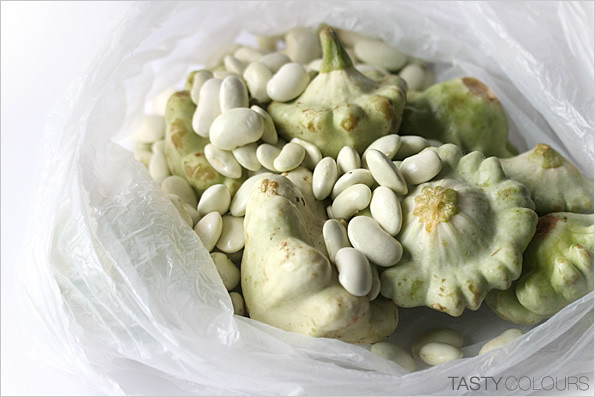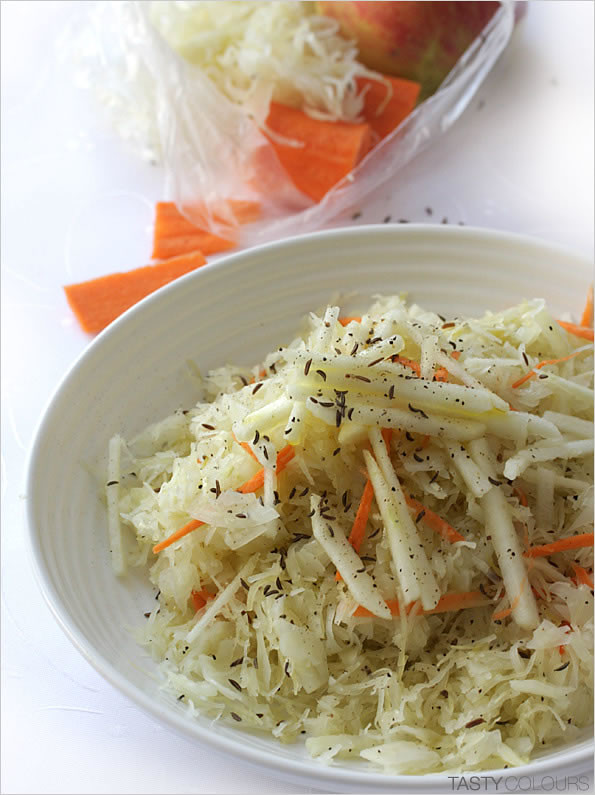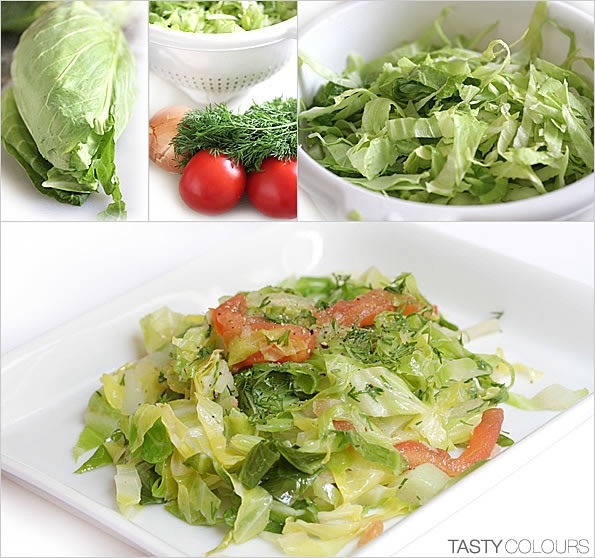On 1 July 2011 Poland took over the Presidency of the European Union. Poland will hold this Presidency for another six months. I am not into politics lately (especially, that the Presidency started with a little scandal in the European Parliament), but I am vividly interested in one aspect – meaning - cooking.
Adam Chrząstowski, chef of the restaurant Ancora in Kraków designed a special menu which will be served at high level meetings during the Presidency (he has been appointed as an expert in the Department of Coordination of Polish Presidency in the EU at the Ministry of Foreign Affairs of the Republic of Poland).
What will this food, presented to European officials, be like? For sure, it will not be Italian, it will not be pan-European or “multi-cultural”, it will be, as the chef puts it, “Polish, in a new, or rather “forgotten” version”.
So, everybody, let’s forget about pierogi, żurek and “kotlet schabowy” (pork’s cutlet) – the symbols of the Polish, socialist, cuisine of the proletariat. No place for that. The Polish Presidency is a great moment for the promotion of Polish culinary traditions, Mr Chrząstowski says, so let’s focus on promoting the forgotten aspects of Polish cooking – meaning aristocratic and bourgeois cooking, which was based on such products as game, poultry, forest fruits, forest mushrooms and soft water fish. Well, that’s fine.
A few weeks ago, I had a chance to translate a culinary brochure which is to be published in France (and in other EU countries) in connection with the Presidency – the brochure contains about 20 recipes from renowned Polish chefs (including those who experiment with molecular cuisine). The purpose of this little cookbook is not only the promotion of Polish cuisine, but also the promotion of Polish specialties and products like, for example, strawberries (Poland is the seventh largest producer in the world), sour cucumber, beetroots, potatoes, poppy seeds, game, buckwheat, tvarog, apples, herrings etc.
That is why, maybe a bit perfidiously, I am proposing today a symbol of socialist cuisine - a pork cutlet called here, in Poland, “kotlet schabowy”. I know that the dish is not representative enough for the promotion of Polish food during the Polish Presidency. I realize this is a type of preparation that was lifted, during communism, to our national dish. But remember: although it is neither too healthy nor elegant, nearly everybody loves it.
This flag meat dish of socialist Poland, was usually consumed, along with “rosół” (broth with noodles), on Sunday “obiad” in nearly every typical Polish family. I read that the career of the Polish cutlet probably started in the XIXth century. After World War II it became a symbol of equality of socialist cuisine for all social classes, where shortcoming in delivery of any type of meats was normal. The cutlet, friendly called as “schabowy” or “schabowszczak” is still the king of meat dish served in cantinas, in cheap joints, in fast foods and even in some good restaurants. And it is usually served with cooked or sour cabbage and potato purée.
There is one small detail though, which I will try to explain as simply as I can. Firstly: nearly everybody in Poland likes a good “schabowy”. Secondly: there exists in Poland a part of society (let’s simply call them the “traditionalists”) whose culinary imagination starts and ends with “schabowy”. As you can read in Karolina’s post (the story, unfortunately, is not available in English) these people are called “kotleciarze”. Remember this very accurate term. KOTLECIARZE ! It is not so easy to explain what it means. I will try, however, quoting Karolina. So, first of all, “kotleciarz” is a play on words coming from the word “cutlet” (“kotlet” in Polish) and literally it simply means a “person who eats cutlets”. But there is a double, deeper meaning of that term. The “Kotleciarz” (cutlet eater) has a special mentality. For example, as Karolina writes in her blog (and I agree with that), when the “kotleciarz” goes abroad on holidays (let’s say, to Egypt, Tunisia or Italy) he will be complaining that one cannot find a breaded pork’s cutlet in hotels’ menus. When invited to enjoy a delicious lemon and parsley linguine dish, the same “kotleciarz” will complain that “this spaghetti is bizarre, because it lacks meat and red sauce”. The “Kotleciarz” is absolutely suspicious about every food, except for that one cooked by his mother (or eventually his wife). Once the “kotleciarz” visits Spain, he will not want to try any tapas, and will rather be searching for places serving “fish and chips”. and for example, the “kotleciarz” living in Strasbourg, France (close to the German border) will not try foie-gras, lamb, or any other disgusting French food – he will rather go shopping in Germany, to buy sauer kraut, tvarog and sausage. As Karolina writes, “kotleciarstwo” is not only a culinary habit; it is also a state of mind. To sum up: I like cutlets, but I hate the “cutlet” mentality.
Today’s cutlet is accompanied with sauerkraut salad. However, it also goes well with shortly braised young cabbage. Sauerkraut may be bought everywhere in Poland (meaning, in every shop, all year round). Abroad, one can find it in stores carrying Polish or Russian food items. On the other hand, young cabbage is a seasonal product and may be found only in late spring or at the beginning of summer. Young cabbage braised with some tomatoes and sprinkled with dill is a very popular summer accompaniment to meat dishes. Often, bacon is added; today I present it with some tomatoes and a lot of fresh dill.
Breaded pork’s cutlet – “kotlet schabowy”
Serves 4
Ingredients:
600 g pork’s cutlet (boneless – some people prefer them with bones – do as you wish)
2 eggs
4-5 tablespoons butter
2 tablespoons olive oil / vegetable oil (a lot of people also use pork’s back fat)
150 bread crumbs (some also use flour, I do not think it is necessary)
Salt
Pepper
If using chops, trim off fat and gristle. If using tenderloin, trim off fat, remove silver skin and cut into 4 equal pieces. On a cutting board, pound pork between two pieces of plastic wrap to around 0,7 cm. Remove from the plastic film. Salt and pepper the meat.
Prepare two plates. Break the eggs into the first plate and beat them with a fork. Pour bread crumbs into the second plate. Dip each cutlet firstly in the egg, then in bread crumbs.
In a hot frying pan, melt the grease and once it reaches frying temperature, place the cutlets and fry them for around 5-6 minutes over a medium flame on each side (pork meat must be well done). Serve with potato purée and a cabbage salad or young cabbage (recipes below). .
Sauerkraut salad
Serves 4
Ingredients:
400 g sauerkraut (available in stores with Polish or Russian food items)
1 sour apple, peeled, washed and cut into julienne, sprinkled with lime juice
1 small carrot, peeled, washed and cut into julienne
1 onion, peeled, washed and finely chopped
½ teaspoon caraway, blanched in boiling water
4 tablespoons vegetable oil
Salt
Pepper
Sugar
Squeeze the cabbage in hands to remove the excess of sour juice. On a cutting board, chop the cabbage quite finely and place it in a bowl. Add the apple, carrot and onion. In a glass, mix oil with caraway, a pinch of sugar, salt and pepper. Pour into the salad, mix very well and serve as an accompaniment to your lovely cutlet.
Young cabbage with dill
Serves 4
Ingredients:
1 medium young white cabbage – around 600-700 g, finely chopped, the stalk removed
1 large onion, peeled and finely chopped
2 ripe, medium tomatoes, blanched and peeled, cut into quarters, seeds removed
1 bunch finely chopped dill
3 tablespoons olive oil / vegetable oil
2 tablespoons butter
2 tablespoons lemon juice
Salt
Pepper
A pinch of sugar
Pour oil into a large saucepan. Add onions, sauté them until quite soft. Add cabbage, mix and cook over a medium flame for about 15 minutes. The cabbage should release some juice. Do not let the cabbage burn. If necessary, add a bit of vegetable stock or water.
Add tomatoes when the cabbage becomes a bit transparent and soft. Mix everything and cook for a maximum of 10 to 15 more minutes. Add butter and mix. The cabbage should not be overcooked (this is how I like it).
Before serving, add lemon juice and dill, season with salt and pepper according to your taste.












